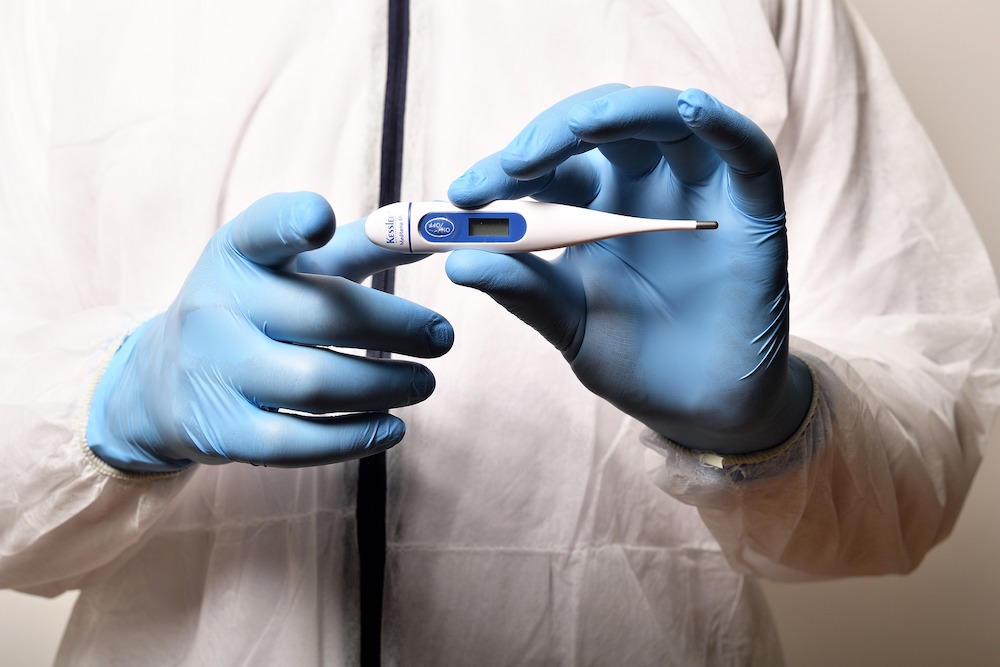Suspected COVID-19 Simulation Scenario from CAE Healthcare, New WHO Resources & More
Following our previous coverage of Coronavirus training including “Coronavirus Simulation Resources: Scenarios, Online Training, Procedures Guide” and “HHS Whistleblower Complaint Demonstrates Immediate Need for Medical Simulation Coronavirus Training“, today we share more resources for COVID-19 medical simulation training resources, starting with a COVID-19 Simulation Scenario from CAE Healthcare.
This is an extremely helpful tool for all healthcare simulation programs, not just those with CAE Healthcare products — so we highly encourage everyone facing this training emergency to grab it. Below that is the latest WHO Coronavirus tools, IHI Patient Safety Toolkits, key containment success stories and more. Have something on Coronavirus training to share? Email us!
See our Coronavirus Healthcare Simulation Page for the latest list of global tools! For more details of the items on this list, please be sure to also read / share this and our previous Coronavirus Simulation articles:
Sponsored Content:
- Additional Responses to the Coronavirus from the Medical Simulation Industry
- Healthcare Simulation Industry Responds to Coronavirus COVID-19
- Coronavirus Simulation Resources: Scenarios, Online Training, Procedures Guide
- HHS Whistleblower Complaint Demonstrates Immediate Need for Medical Simulation Coronavirus Training
- Suspected COVID-19 Simulation Scenario from CAE Healthcare, New WHO Resources & More (this article)
CAE Healthcare COVID-19 Scenario & Training Checklist
“Suspected COVID-19 is a complimentary, downloadable simulation-based scenario” from CAE Healthcare. In an effort to assist clinicians with gaining knowledge, confidence and competency in handling suspect and diagnosed cases of COVID-19 in patients, CAE Healthcare is offering a free, downloadable Suspected COVID-10 Simulated Clinical Experience (SCE) for the entire healthcare community! This is not just a SCE file but a checklist of tools as well. Get the COVID-19 CAE Healthcare Scenario Here!
Incorporated with TeamSTEPPS Tools and Strategies to enhance competencies for high-performance teams, the COVID-19 SCE trains learners in proper care management of the suspected coronavirus patient. It reinforces team-centric procedures for effective and safe infection control in the face of a critical healthcare event.
This clinical experience is focused on six learning performance measures that are central to coronavirus preparedness and patient management:
Sponsored Content:
- Baseline Patient Presentation
- Triage and Patient Assessment
- Implementation of Safety Protocols (Donning of PPE, Hygiene Implementation, Cross Contamination Prevention, etc)
- Progressive Symptom Management and Patient Care
- After Care Actions (Patient Isolation, Public Health Notification, etc)
- Proper Doffing of PPE and Waste Disposal Management
The scenario is designed to develop clinical competencies in CDC and WHO approved procedures for suspected coronavirus infection, healthcare facility preparedness, and patient treatment protocols. Compatible with CAE Juno, CAE Ares, CAE Apollo, CAE Lucina, and similar patient simulators
Get the COVID-19 CAE Healthcare Scenario Here!
World Health Organization (WHO) Coronavirus Training Tools
COVID-19: Operational Planning Guidelines and COVID-19 Partners Platform to support country preparedness and response: In order to assist UN country teams in scaling up country preparedness and response to COVID-19, WHO has developed these learning modules as a companion to the Operational Planning Guidelines to Support Country Preparedness and Response. This learning package consists of 3 modules with videos and downloadable presentations.
The training is intended:
- For UN country teams (UNCTs)
- For other relevant stakeholders, including partners, donors and civil society
- To support national readiness and preparedness for COVID-19
- To help countries increase their capacity to respond to COVID-19
- To increase international coordination for response and preparedness
- To streamline the process of coordinating resources and assessing country preparedness level
Infection Prevention and Control (IPC) for novel coronavirus (COVID-19): This course provides information on what facilities should be doing to be prepared to respond to a case of an emerging respiratory virus such as the novel coronavirus, how to identify a case once it occurs, and how to properly implement IPC measures to ensure there is no further transmission to HCW or to other patients and others in the healthcare facility. This training is intended for healthcare workers and public health professionals, as it is focused on infection prevention and control.
Introduction to emerging respiratory viruses, including novel coronavirus: Coronaviruses are a large family of viruses that are known to cause illness ranging from the common cold to more severe diseases such as Middle East Respiratory Syndrome (MERS) and Severe Acute Respiratory Syndrome (SARS). A novel coronavirus (COVID-19) was identified in 2019 in Wuhan, China. This is a new coronavirus that has not been previously identified in humans. This course provides a general introduction to COVID-19 and emerging respiratory viruses and is intended for public health professionals, incident managers and personnel working for the United Nations, international organizations and NGOs.
Access these WHO Coronavirus Training Tools Here!
BMC Journal: Preparing for COVID-19: early experience from an intensive care unit in Singapore
By 17 February 2020, Singapore recorded the highest number of confirmed cases outside of mainland China with several clusters of local transmission. All healthcare institutions adopted a common strategy of containment, with isolation of all suspected or confirmed cases of COVID-19 in negative-pressure rooms. We were fortunate that most ICU beds were single rooms—this infrastructure was put in place following the outbreak of SARS in 2003. We realized preparing ICUs for patients with COVID-19 had numerous other requirements.
First, infection control not only involved strict adherence to personal protective equipment for the individual, but also involved changes in group dynamics. We organized our ICU to mitigate the effects of any infected staff by avoiding potential spread between teams (see Table 1). Related to infection control, the medical ICU was given the task to cohort suspect or confirmed cases, including with peri- and post-partum care of pregnant women. Second, evolving information necessitated rapid and regular communications with large, disparate groups of clinicians.
Third, we had to train non-ICU acute medical staff dealing with critically ill patients prior to ICU admission, especially for resuscitation. Fourth, we had to re-examine specific ICU services. Given that extracorporeal membrane oxygenation (ECMO) for severe viral pneumonia is well-established [5], we prepared to cohort all COVID-19 patients in the medical ICU and have a satellite team from the cardiothoracic ICU manage the ECMO circuit. Read the full article here.
Coronavirus: South Korea’s infection rate falls without citywide lockdowns like China, Italy
South Korea has seen a steady decrease in new coronavirus cases for four consecutive days, despite being one of the worst-affected countries outside China, although global attention has shifted towards outbreaks in Italy and Iran. As of end-Monday, it had 7,513 cases and 54 deaths. The Korea Centres for Disease Control and Prevention (KCDC) said there was an increase of 131 cases from Sunday to Monday. The country averaged more than 500 new infections a day for the past two weeks, but last Friday, this number dipped to 438, then 367 on Saturday and 248 on Sunday. The daily number of confirmed cases is reported the following day. What this means to us is that the adoption of massive testing must take place immediately! Read the full story here.
Patient Safety Toolkit from the Institute for Healthcare Improvement (IHI)
IHI’s Patient Safety Essentials Toolkit is a helpful companion for you and your organization on the journey to delivering safe, reliable care every time, for every patient. Patient Safety Essentials Toolkit Designed and tested by IHI’s world-renowned safety experts, the Toolkit includes documents on improving teamwork and communication, tools to help you understand the underlying issues that can cause errors, and valuable guidance about how to create and maintain reliable systems. Each of the nine tools includes a short description, instructions, an example, and a blank template. Download the toolkit here.
Inside the Toolkit, you’ll find:
- The SBAR (Situation-Background-Assessment-Recommendation) technique, which provides a framework for communication between members of the health care team about a patient’s condition.
- Action Hierarchy, a component of RCA2 that will assist teams in identifying which actions will have the strongest effect for successful and sustained system improvement.
- A daily huddle agenda, which gives teams a way to proactively manage quality and safety.
- Failure Modes and Effects Analysis: Also used in Lean management and Six Sigma, FMEA is a systematic, proactive method for identifying potential risks and their impact.
Subscribe for More Coronavirus Simulation Tools!
Lance Baily, BA, EMT-B, is the Founder & CEO of HealthySimulation.com, which he started while serving as the Director of the Nevada System of Higher Education’s Clinical Simulation Center of Las Vegas back in 2010. Lance is also the Founder and acting Advisor to the Board of SimGHOSTS.org, the world’s only non-profit organization dedicated to supporting professionals operating healthcare simulation technologies. His co-edited Book: “Comprehensive Healthcare Simulation: Operations, Technology, and Innovative Practice” is cited as a key source for professional certification in the industry. Lance’s background also includes serving as a Simulation Technology Specialist for the LA Community College District, EMS fire fighting, Hollywood movie production, rescue diving, and global travel. He and his wife Abigail Baily, PhD live in Las Vegas, Nevada with their two amazing daughters.
Sponsored Content:



















